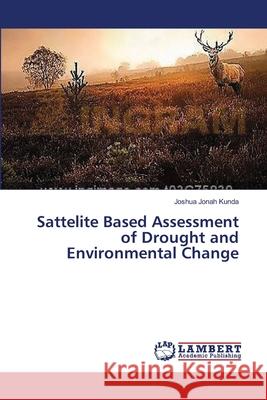Sattelite Based Assessment of Drought and Environmental Change » książka
Sattelite Based Assessment of Drought and Environmental Change
ISBN-13: 9783659492525 / Angielski / Miękka / 2014 / 84 str.
This study illustrates the results of an analysis performed using Remotely Sensed Data and Geographic Information Systems technique in land use/cover assessment of Lake Chad Basin. Landsat Multi Spectral Scanner, Thematic Mapper, Enhanced Thematic Mapper and Nigeriasat-1satellite imagery were used to determine the rate, trend and magnitude of land use/cover changes between 1972 and 2013. A supervised classification approach using ILWIS 3.3 version was used. Six categories of land use/cover types were generated as follow: Bare surfaces, cultivated land, Disturbed vegetation, Natural vegetation, Water Bodies and Wetlands. Questionnaires administered and focus group discussions were also held with farmers and fisher men in about eight farms per village to collect primary data on the socio-economic activities and drought coping strategies of 156 respondents using systematic random sampling technique in Baga (north of the Basin) and Southern Irrigation Chad project around Marte (south of the Basin) to examines the indigenous techniques of copping with drought by the farmers of Southern Chad Irrigation Scheme in the Nigerian portion of Lake Chad Basin
This study illustrates the results of an analysis performed using Remotely Sensed Data and Geographic Information Systems technique in land use/cover assessment of Lake Chad Basin. Landsat Multi Spectral Scanner, Thematic Mapper, Enhanced Thematic Mapper and Nigeriasat-1satellite imagery were used to determine the rate, trend and magnitude of land use/cover changes between 1972 and 2013. A supervised classification approach using ILWIS 3.3 version was used. Six categories of land use/cover types were generated as follow: Bare surfaces, cultivated land, Disturbed vegetation, Natural vegetation, Water Bodies and Wetlands. Questionnaires administered and focus group discussions were also held with farmers and fisher men in about eight farms per village to collect primary data on the socio-economic activities and drought coping strategies of 156 respondents using systematic random sampling technique in Baga (north of the Basin) and Southern Irrigation Chad project around Marte (south of the Basin) to examines the indigenous techniques of copping with drought by the farmers of Southern Chad Irrigation Scheme in the Nigerian portion of Lake Chad Basin











